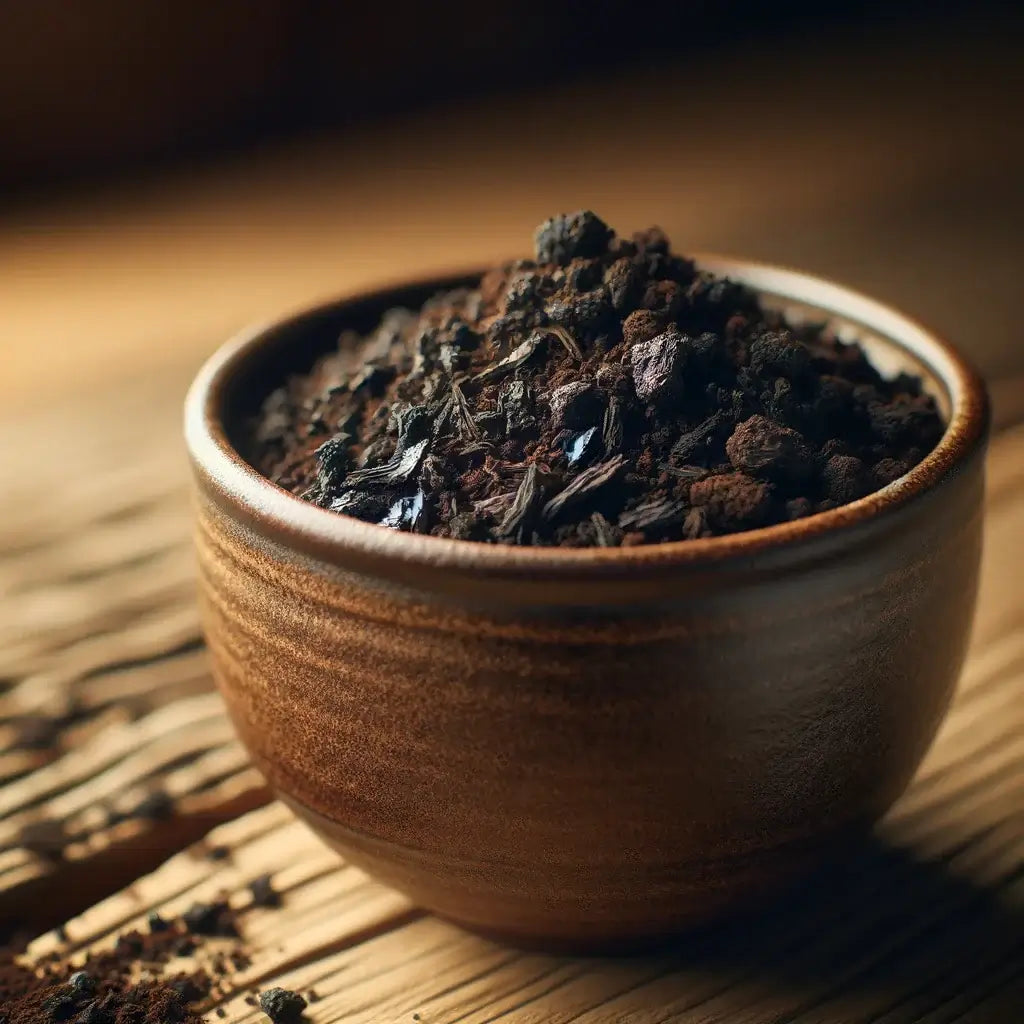Historical Significance and Cultural Importance
Chaga, the “King of Medicinal Mushrooms,” has been a staple in Siberian folklore medicine for centuries, often associated with immune system support and overall well-being. Growing predominantly on birch trees in cold climates, it has been traditionally used by various cultures across Northern Europe, Russia, and Canada. This fungus has been a symbol of health and longevity, often used to brew a nourishing and revitalizing tea.
Chaga Tea Recipe
Ingredients:
- Wild Chaga
- Hot Water – 4 cups
- Optional: Honey, Cinnamon Stick, or Lemon, to taste
Directions:
- Preparing Chaga: Break the Chaga into small pieces, using about one tablespoon of Chaga pieces per cup of water.
- Boiling: Place the pieces in a pot with water and bring to a gentle boil.
- Simmering: Once boiling, reduce the heat and let it simmer for at least 30 minutes to extract the beneficial compounds properly. The longer it simmers, the more potent the tea.
- Straining: Strain the tea into cups, discard the used pieces.
- Serving: Sweeten with honey or add lemon or a cinnamon stick if preferred.
Health Benefits

Chaga is renowned for its high antioxidant content and its potential to support immune system function. It has been studied for its potential anti-inflammatory and anti-viral properties, making it a popular choice for those seeking to maintain good health.
Culinary Uses
Beyond tea, Chaga can be incorporated into smoothies, soups, or other recipes, adding a depth of flavor and its unique health properties to dishes.
Savoring Chaga Tea
When savoring Chaga tea, reflect on the ancient traditions and the pristine forests it hails from. Whether enjoyed alone or shared with loved ones, Chaga tea can be a soothing, nourishing beverage, imbued with the resilience and strength of the trees it grows on.





